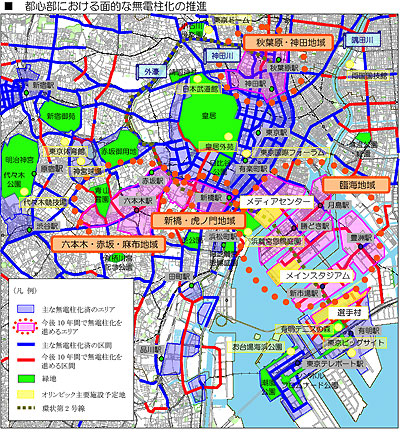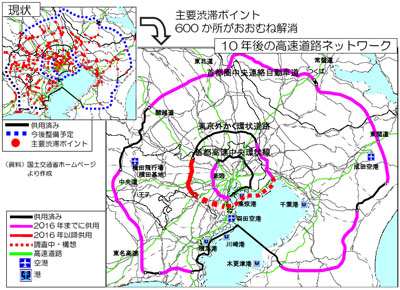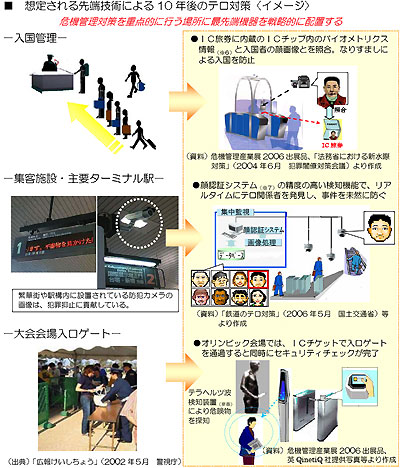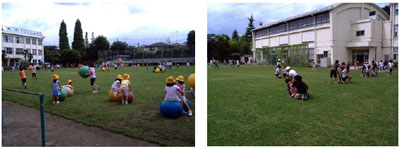For the 1964 Olympics, Tokyo reinvented itself to accommodate the needs of a world-class sporting event. The Shinkansen was completed before the opening ceremony; a network of elevated highways sprung up over Tokyo’s rivers; a neighborhood was razed to build a stadium and park. The Tokyo we know today was shaped by the needs of the Olympics.
And Tokyo is redesigning itself again, partly in anticipation of hosting the 2016 Olympics (the location will be decided in October 2009, but the city is hopeful) and partly to fill the needs of this still-growing city.
On the 22nd, the Tokyo government unveiled its 10 year plan for Tokyo. It’s a huge and detailed document in Japanese, well worth perusing. Here’s my brief summary in English:
- Reviving Tokyo’s Beauty by Wrapping it in Water and Greenery

Blue indicates areas with underground power lines; red/pink shows planned burials. The yellow areas are possible Olympic sites.
Much of this plan involves building park areas along the Arakawa and Tama rivers (which weren’t covered by highways in 1964). Plans also include burying power lines and creating more bright and open spaces in the city.- Refreshing Tokyo with Three Ring Roads

Ring road plans. The pink roads will be completed by 2016. In the inset, the red dots show current congestion points.
Ringing Tokyo will improve traffic to the airports and ports and connect the outlying areas, including the “Tama Silicon Valley,” to one another more effectively. Also in the plans are reductions to CO2 emissions and high tech safety controls on highways.- Reducing the World’s Environmental Burden
- Tokyo plans to aggressively reduce CO2 levels through use of traffic management and biodiesel public transportation, bringing levels to 25% less than the 2000 measurements. They will build advanced water purification plants along the Tone River to produce 100% of Tokyo’s water and they will create new recycling systems and work with private sector recycling businesses.
- Boosting Confidence with Disaster Preparedness
-

Three terrorism prevention techniques: biometrics at immigration, facial recognition in train stations; IC chipped tickets at event venues
The main goal is to improve not only earthquake safety measures in new construction, but to build flood control and more thorough disaster prevention plans. For instance, along emergency evacuation routes, new hospitals and public works building will be erected. Terrorism will be combated with the latest technology (yes, this is as lame as I make it sound). - Creating a Model City for an Aging Society
- Japan is about to experience a surge in elderly as the post-war babies reach 60. Tokyo has noted that “the elderly have renewed the ‘elderly people’ image by actively volunteering in the community” and this is something they want to encourage with support of volunteerism. Advanced health care, including robotics and IT networks, and supporting aging foreign residents is also in the plan.
- Establishing Tokyo as a City of Charm and an Industrial Power
- Tokyo will trade on Japan’s pop culture and advertise more widely for foreign visitors, making improvements to areas visitors frequent. This section has many comparisons to culture programs in other Olympic cities.
- Creating a Can-do Spirit in Everyone
- This is a soft goal, revolving mainly around encouraging students to seek higher education and for everyone to participate in NGOs and volunteer activities.
- Sharing the Dream of Sports with the Next Generation

The future of Japanese sports.
Japan’s kids are getting fatter and less athletic. Where will the future Olympians come from? Tokyo will support youth sports clubs and establish a network of volunteers to train kids in sports.
interesting
Posted by: on January 12, 2007 09:15 AM